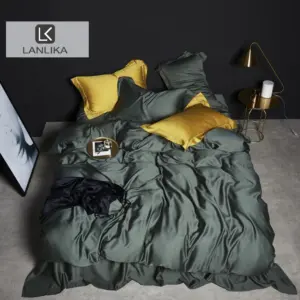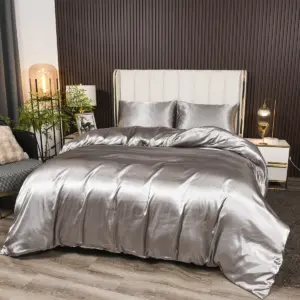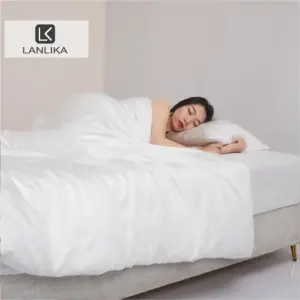The Science Behind Silk’s Natural Temperature Regulation
Sleep quality depends greatly on maintaining the right body temperature throughout the night. When we’re too hot or too cold, we toss and turn instead of getting the deep rest we need. This is where temperature-regulating bedding becomes essential.
Silk stands apart from other materials thanks to its unique molecular structure. Made of natural protein fibers called fibroin, silk contains 18 amino acids that create a remarkable material unlike any synthetic alternative. These protein fibers are arranged in a way that allows silk to adapt to your body’s temperature needs automatically.
What makes silk truly exceptional is its ability to create a microclimate around your body. Unlike synthetic materials that trap heat and moisture, the amazing benefits of Mulberry silk sheets include natural temperature adaptation that works with your body’s needs.
Historical evidence supports silk’s temperature-regulating abilities—for thousands of years, silk has been prized across diverse climates from the hot regions of ancient China to the cooler areas of medieval Europe, valued specifically for its ability to provide comfort in varying temperatures.
This natural temperature regulation isn’t just about comfort—it directly impacts your sleep cycles, helping you stay in restorative deep sleep longer without disruptions from overheating or chilling.
How Silk’s Properties Create Perfect Sleep Temperature
Silk’s exceptional temperature regulation comes from four key properties working together to create ideal sleeping conditions:
Breathability: Silk fibers create a naturally porous structure that allows continuous air circulation. This ventilation prevents the stuffy, stagnant feeling that often accompanies synthetic bedding, allowing heat to escape rather than becoming trapped against your skin.
Moisture-Wicking: One of silk’s most impressive qualities is its ability to absorb moisture—up to 30% of its weight without feeling damp, compared to cotton’s absorption rate of under 10%. This means silk efficiently draws sweat away from your body during sleep, preventing the clammy feeling that often disrupts rest.
Adaptive Insulation: Silk’s hollow fiber structure creates tiny air pockets that provide natural insulation. These microscopic pockets trap warm air when you need heat retention and release it when you don’t, making silk uniquely responsive to your body’s changing temperature needs throughout the night.
Lightweight Nature: Despite its insulating properties, silk remains incredibly lightweight. This allows it to drape gently over your body without creating the heat-trapping weight of heavier materials, contributing to its ability to maintain comfort regardless of the season.
Together, these properties create what sleep experts consider ideal sleeping conditions. Transforming sleep quality starts with understanding how these natural properties work together to regulate your body temperature throughout different sleep cycles.
Silk vs. Other Bedding Materials: Temperature Regulation Comparison
When comparing different bedding materials for temperature regulation, silk consistently stands out for its balanced performance across all comfort factors:
| Material | Breathability | Moisture-Wicking | Heat Retention | Cooling Properties |
|---|---|---|---|---|
| Silk | Excellent | Excellent | Moderate | Excellent |
| Cotton | Good | Moderate | High | Moderate |
| Bamboo | Good | Good | Low | Good |
| Linen | Excellent | Good | Low | Excellent |
| Synthetics | Poor | Poor to Moderate | Very High | Poor |
Cotton, while breathable, tends to absorb moisture but doesn’t wick it away efficiently. This means cotton sheets might feel cool initially but can become damp and uncomfortable as the night progresses, especially for hot sleepers.
Bamboo offers good moisture management and cooling properties, but doesn’t quite match silk’s adaptability between seasons. While bamboo excels in hot weather, it may feel too cool in winter months.
Linen provides excellent summer cooling but typically feels rough against the skin and lacks silk’s year-round versatility. It also wrinkles significantly more than silk.
Synthetic materials like polyester and microfiber typically perform poorly for temperature regulation, often trapping heat and moisture against the skin, leading to uncomfortable night sweats.
The unique advantage of temperature control silk sheets is their adaptability—they don’t just excel at cooling or warming but adjust based on your body’s needs throughout the night and across seasons.
Essential Types of Temperature-Regulating Silk Bedding
Creating the perfect temperature-regulated sleep environment often requires combining different silk bedding elements. Each type offers specific benefits for temperature management:
Silk Sheets & Pillowcases: As the items in direct contact with your skin, these provide the most immediate temperature-regulating benefits. The smooth surface allows for friction-free movement while the natural properties wick moisture away from the face and body. Cooling silk sheets are particularly effective for people who tend to sleep hot or experience night sweats.
Silk Duvet Covers: These transform your existing comforter into a temperature-regulating cocoon. A silk duvet cover adds breathability to even synthetic-filled duvets, helping regulate the temperature within your bedding system while providing that luxurious silk touch against your skin when the comforter is pulled up.
Silk-Filled Comforters: For comprehensive temperature regulation, silk-filled comforters provide consistent comfort throughout the night. The natural silk filling creates countless tiny air pockets that adapt to your body’s changing temperature needs, making them ideal for couples with different temperature preferences.
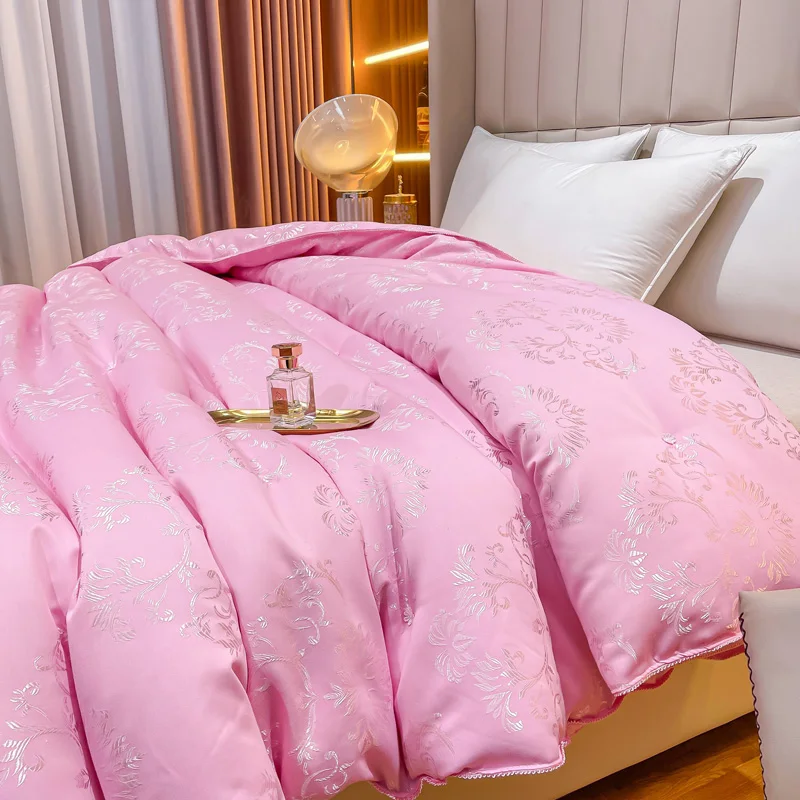
Silk Blankets & Throws: These versatile pieces allow for personalized layering options. They’re light enough to use during warmer months alone and perfect as an additional layer during cooler seasons, providing temperature regulation without the bulk of traditional blankets.
For optimal results, many find that a complete silk bedding system—with sheets, pillowcases, and duvet cover all working together—creates the most consistent temperature-regulated sleep environment.
Understanding Momme Weight for Temperature-Regulating Silk
Momme (pronounced “moe-me”) weight is the key quality indicator for silk fabrics, similar to thread count in cotton but much more meaningful. This measurement represents the weight of 100 yards of silk that is 45 inches wide, in pounds.
For temperature-regulating properties, the ideal momme range falls between 19-25. This range provides the optimal balance between durability and breathability:
- 16-19 momme: Lighter silk that offers excellent breathability but less durability
- 19-22 momme: The sweet spot for temperature regulation, offering ideal breathability while maintaining good durability
- 22-25 momme: More substantial silk with slightly less breathability but exceptional durability and insulating properties
- 25+ momme: Heavy silk with superior durability but decreased breathability
Understanding what makes Mulberry silk special includes recognizing how momme weight affects its performance. Higher momme doesn’t always mean better—it depends on your specific needs.
For hot sleepers, silk in the 19-22 momme range typically provides the best cooling effect while maintaining sufficient durability. Those who tend to feel cold might prefer the 22-25 momme range for its additional insulating properties.
The momme weight also affects how the silk drapes on your bed and how it feels against your skin, with higher momme weights creating a more substantial hand feel that some prefer for its luxurious quality.
Key Selection Criteria for Temperature-Regulating Silk Bedding
When shopping for temperature-regulating silk bedding, these key factors will help ensure you select products with optimal performance:
Type of Silk: Mulberry silk is the gold standard for temperature regulation due to its long, uniform fibers that create a consistent fabric structure. Tussah (wild silk) has shorter, less uniform fibers that don’t regulate temperature as effectively. Look specifically for 100% Mulberry silk for the best temperature-regulating performance.
Weave Structure: Charmeuse weave offers the classic smooth silk surface on one side with a matte finish on the other, providing excellent temperature regulation. Habotai weave is lighter but less durable, while heavier jacquard weaves add texture but may slightly reduce breathability.
Certifications: OEKO-TEX Standard 100 certification ensures the silk is free from harmful chemicals that could affect its natural properties. This is particularly important as some processing methods can diminish silk’s natural temperature-regulating abilities.
Color & Dye Process: Natural or vegetable-dyed silks often maintain better breathability than those treated with heavy chemical dyes. The dyeing process can affect the protein structure of silk if not done properly, potentially diminishing its temperature-regulating properties.
Construction Details: Look for reinforced seams, French seams, or flat-felled seams that enhance durability without adding bulk that could affect breathability. Quality construction ensures the bedding maintains its temperature-regulating properties throughout years of use.
The Mulberry silk sheets from quality manufacturers typically address all these criteria, creating products specifically engineered to maximize temperature regulation while maintaining durability and comfort.
Sanctuary Soft’s Premium Temperature-Regulating Silk Collection
Sanctuary Soft’s approach to temperature-regulating silk bedding centers on optimizing silk’s natural properties through meticulous material selection and manufacturing processes.
Each item in the collection undergoes rigorous quality testing focused specifically on temperature-regulating performance. This includes breathability assessment, moisture-wicking evaluation, and thermal conductivity testing to ensure optimal comfort throughout the night.
The brand’s signature 22-momme Mulberry silk represents the ideal balance between durability and breathability—substantial enough to last for years while maintaining maximum temperature-regulating effectiveness. This carefully selected momme weight performs beautifully across seasons, cooling during warm nights while providing gentle warmth when temperatures drop.
What truly distinguishes Sanctuary Soft’s temperature-regulating silk bedding sets is their comprehensive approach to sleep comfort. Rather than focusing solely on cooling (as many competing products do), these collections address the full spectrum of temperature regulation—adapting to your body’s changing needs throughout the night and across seasons.
The production process preserves silk’s natural temperature-regulating properties by avoiding harsh chemicals and excessive processing that could damage the protein structure of the fibers. This commitment to maintaining silk’s intrinsic qualities ensures consistent performance night after night.
Top Recommended Temperature-Regulating Silk Bedding Products
Best Overall Silk Sheet Set: The Sanctuary Soft 22-Momme Mulberry Silk Sheet Collection delivers exceptional all-season temperature regulation. These sheets feature a perfect balance of breathability and substance, with reinforced seams for durability. The 22-momme weight provides ideal moisture-wicking capabilities while maintaining sufficient weight for year-round comfort.
Best Cooling Silk Pillowcase: The Cool Touch Silk Pillowcase uses specially formulated 19-momme silk with enhanced breathability. The envelope closure design prevents shifting during sleep, while the slightly lighter momme weight maximizes cooling properties. Particularly beneficial for those who tend to experience facial overheating during sleep.
Best All-Season Silk Comforter: The Adaptable Weight Silk Duvet combines natural silk filling with a 100% silk outer shell for comprehensive temperature regulation. The baffle box construction prevents filling from shifting, ensuring consistent temperature control throughout the night. This design allows warm air to dissipate in summer while providing gentle insulation during cooler months.

Best Value Temperature-Regulating Set: The Essential Silk Sleep Bundle pairs a silk pillowcase with a fitted sheet for an economical introduction to silk’s temperature-regulating benefits. This set targets the two most critical contact points for temperature regulation—the face and body core—while allowing for gradual transition to a complete silk bedding system.
Premium Luxury Option: The Sanctuary Collection Complete Silk Bedding System integrates sheets, pillowcases, duvet cover, and optional silk-filled comforter in matching 25-momme silk. This comprehensive system creates a complete temperature-regulated sleep environment with maximum durability and luxurious weight.
Ultimate guides to temperature-regulating sheets often highlight the importance of selecting products that match your specific sleep temperature tendencies, making personalized selection crucial for optimal results.
Beyond Temperature: Additional Benefits of Silk Bedding
While temperature regulation remains a primary benefit of silk bedding, several additional advantages make it an even more valuable investment:
Hypoallergenic Properties: Silk’s natural protein structure resists dust mites, mold, and mildew—common allergens that thrive in traditional bedding. For allergy sufferers, this natural resistance can significantly improve sleep quality by reducing nighttime symptoms.
Skin & Hair Benefits: The smooth surface of silk creates minimal friction against skin and hair, helping prevent sleep wrinkles and reducing hair breakage and tangling. The Mulberry silk bedding skin benefits extend to moisture balance as well—silk allows skin to retain natural moisture while wicking away excess, helping maintain optimal hydration levels.
Durability & Longevity: Quality silk bedding often outlasts cotton alternatives when properly cared for. The natural strength of silk fibers results in remarkable durability despite its luxurious feel, making it a long-term investment rather than a frequent replacement item.
Sustainable Aspects: As a renewable, biodegradable natural fiber, silk offers environmental advantages over synthetic alternatives. Its long lifespan also reduces replacement frequency, decreasing overall consumption and environmental impact compared to less durable materials.
100% Silk Sheets, Green Silk Sheets, King Size Silk Bedding Set, Mulberry Silk Bedding Sets, Queen Size Silk Bedding Set
Price range: $1,246.21 through $1,615.22 Select options This product has multiple variants. The options may be chosen on the product pageFull Silk Bedding Set, King Size Silk Bedding Set
Price range: $120.99 through $190.49 Select options This product has multiple variants. The options may be chosen on the product pageGrey Silk Sheets, Silk Sheet and Pillowcase Set
Price range: $88.20 through $146.64 Select options This product has multiple variants. The options may be chosen on the product pageBamboo Silk Sheets, Cooling Silk Sheets
Price range: $130.76 through $177.80 Select options This product has multiple variants. The options may be chosen on the product page100% Silk Sheets, King Size Silk Bedding Set, Mulberry Silk Bedding Sets, Queen Size Silk Bedding Set, White Silk Sheets
Price range: $1,000.79 through $1,351.42 Select options This product has multiple variants. The options may be chosen on the product pageMulberry Silk Fitted Sheet, Mulberry Silk Sheets
Price range: $486.21 through $944.97 Select options This product has multiple variants. The options may be chosen on the product page
These multifaceted benefits combine with silk’s temperature-regulating properties to create a comprehensive sleep solution that addresses multiple aspects of comfort and wellbeing.
Essential Care Instructions for Silk Bedding Longevity
Proper care ensures your silk bedding maintains its temperature-regulating properties for years to come:
Washing Techniques:
– Hand wash or use your machine’s delicate cycle with cold water
– Use only pH-neutral silk-specific detergents, avoiding enzymes and brighteners
– Place items in a mesh laundry bag to prevent snags and reduce friction
– Keep water temperature below 86°F (30°C) to preserve protein fibers
Drying Methods:
– Never wring silk—press gently between towels to remove excess moisture
– Air dry away from direct sunlight to prevent fiber damage and color fading
– Hang sheets and duvet covers, lay pillowcases flat on a towel
– Ensure items are completely dry before storing to prevent mildew
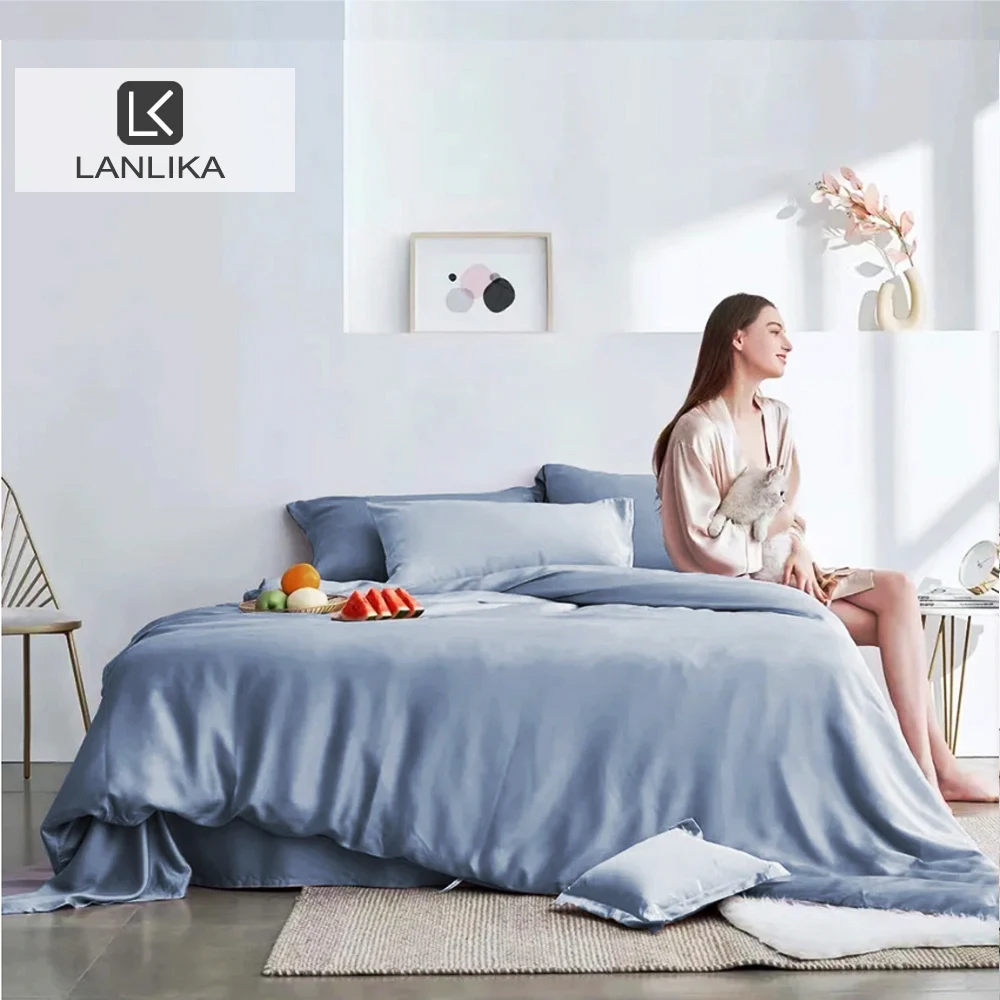
Storage Tips:
– Store fully dry silk in breathable cotton storage bags rather than plastic
– Avoid cedar chests or mothballs as they can damage silk fibers
– Place acid-free tissue paper between folded items to reduce creasing
– Store in a cool, dry place away from direct sunlight
Refreshing Techniques:
– Steam instead of iron when possible to remove wrinkles (use low heat if ironing is necessary)
– Air silk bedding outside (in shade) occasionally to naturally refresh fibers
– Rotate items regularly if you have multiple sets to extend their life
Following these care instructions preserves both the luxurious feel and temperature-regulating performance of your silk bedding investment.
Is Temperature-Regulating Silk Bedding Worth the Investment?
When considering the value proposition of temperature-regulating silk bedding, it’s important to evaluate both immediate cost and long-term benefits:
The initial investment in quality silk bedding typically ranges from 3-5 times the cost of standard cotton alternatives. However, this price difference needs to be considered alongside silk’s exceptional durability—quality silk bedding often lasts 5-10 years with proper care, compared to 2-3 years for typical cotton sheets.
Beyond simple longevity, the sleep quality improvements represent significant value. Better temperature regulation leads to fewer sleep disruptions, more consistent deep sleep cycles, and better overall rest. For those who struggle with night sweats, overheating, or temperature fluctuations, this benefit alone often justifies the investment.
The value equation becomes particularly favorable for:
– Hot sleepers who regularly replace cheaper “cooling” bedding that loses effectiveness
– Those with temperature sensitivity who struggle to stay comfortable throughout the night
– People with skin sensitivities who benefit from silk’s hypoallergenic properties
– Anyone seeking long-term value over repeated replacement of lower-quality alternatives
While silk bedding represents a higher initial investment, its combination of durability, performance, and comprehensive benefits typically offers superior long-term value for those seeking genuine temperature regulation.
Frequently Asked Questions About Temperature-Regulating Silk Bedding
Does silk really help hot sleepers?
Yes, silk genuinely helps hot sleepers through its excellent moisture-wicking properties and breathability. Unlike synthetic “cooling” fabrics that often use chemical treatments that wash out over time, silk’s temperature regulation comes from its natural fiber structure, which draws moisture away from the body and allows air circulation that prevents heat buildup.
What makes silk better than cooling gel products?
Silk provides adaptive temperature regulation rather than just cooling. While cooling gel products typically deliver an initial cooling sensation that diminishes throughout the night, silk continuously regulates temperature by wicking moisture and allowing proper air circulation. Silk also doesn’t require “recharging” or special care like many cooling gel products.
How does silk manage to be warm in winter but cool in summer?
Silk’s adaptive temperature regulation comes from its unique fiber structure containing tiny air pockets that provide insulation when needed while allowing heat to dissipate when not required. Additionally, silk’s excellent moisture management prevents the clammy feeling that can make you feel colder in winter, while efficiently wicking away sweat that would make you feel hotter in summer.
Which silk bedding products offer the best temperature regulation?
Pillowcases and sheets provide the most immediate temperature regulation benefits since they’re in direct contact with your skin. For comprehensive temperature management, a complete system including sheets, pillowcases, and duvet cover offers the most consistent results by creating a fully regulated sleep environment.
Can silk bedding help with night sweats?
Yes, silk bedding is particularly effective for managing night sweats because of its exceptional moisture-wicking properties. Silk can absorb up to 30% of its weight in moisture without feeling wet, drawing sweat away from your body while remaining comfortable. This helps prevent the chilling effect that occurs when sweat evaporates on the skin with less absorbent materials.
What’s the difference between “cooling” silk and regular silk bedding?
True silk doesn’t need special “cooling” treatments—all properly produced silk naturally regulates temperature. Products marketed specifically as “cooling silk” typically feature a lighter momme weight (16-19) for maximum breathability. However, quality silk in the 19-25 momme range provides excellent temperature regulation while offering better durability.
What to Consider When Switching from Traditional to Silk Bedding
Transitioning to silk bedding involves an adjustment period and a few practical considerations:
Most people notice an immediate difference in how silk feels against the skin—typically described as smoother and lighter than cotton or synthetic alternatives. This different sensation may take 2-3 nights to feel completely natural, especially if you’re accustomed to heavier bedding.
Consider starting with key pieces rather than replacing everything at once. A silk pillowcase paired with your existing sheets offers immediate benefits for facial skin and hair while introducing you to silk’s feel. Adding silk sheets next provides the core temperature-regulating advantages before investing in a complete system.
Seasonal considerations also matter when transitioning. Many find summer an ideal time to introduce silk bedding, as its cooling properties are immediately noticeable during warmer weather. This positive first experience often makes the adjustment easier.
For those concerned about silk’s smooth surface feeling slippery, choosing sheets with a higher momme weight (22-25) provides a slightly more substantial feel without sacrificing temperature regulation. Alternatively, using a silk top sheet with your existing fitted sheet can ease the transition.


